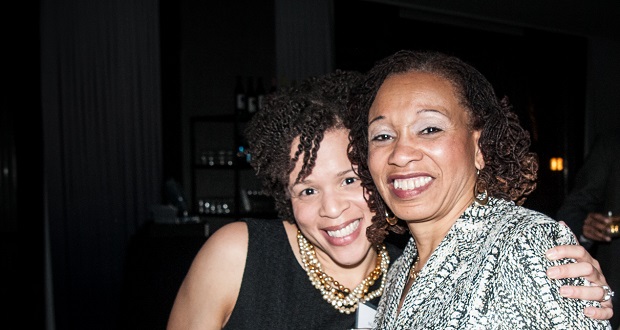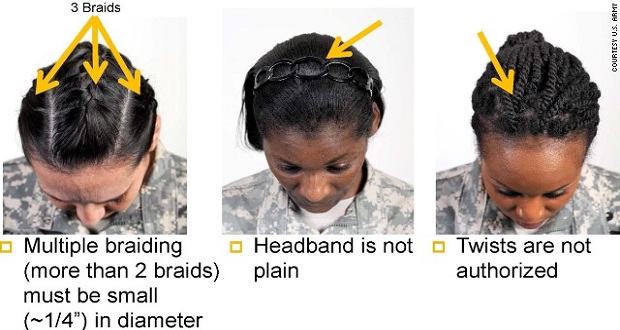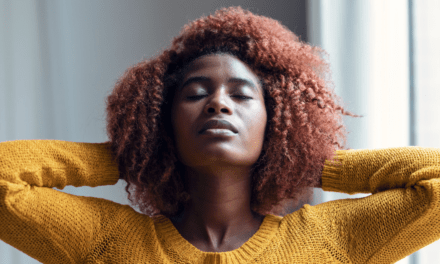
My daughter, Mareisha, and me
I wear my hair in a natural style as does my daughter Mareisha. I do so because it is just too difficult to maintain any other style. I am allergic to chemical straighteners and they have a tendency to thin my hair. I tried using the “straightening comb” method which uses heat, however, if your hair gets wet it reverts back to its natural (“afro like”) state. I choose to wear a style called “sisterlocks”, a version of what are known as “dreadlocks”, but these are very finely locked and I guess look more like braids. I keep my hair in a curly style rather than wearing it straight as I think it is a more professional look.
The US Army has just released guidelines about acceptable hair styles and I guess I would have to cut off my sisterlocks if I was in the Army.

The Army’s guidelines include restrictions on braid and cornrow widths and a ban on twists and dreadlocks.
The Army’s regulations stipulate such guidance as hair “must be of uniform dimension, (mine is) small in diameter (approximately ¼ inch-I meet that requirement, I think), show no more than 1/8 (inch) of the scalp between the braids.” (I would fail on this stipulation)
The guidelines go on to say dreadlocks “against the scalp or free-hanging” are banned. “Unkempt” or “matted” braids and cornrows are also considered dreadlocks and “are not authorized,” according to the regulations that were updated this month.
I read that these regulations or guidelines (it wasn’t clear to me which they were), were developed “in part” with the help of African American female soldiers. I wonder how many were actually consulted as I now understand that there is already a petition signed by 13,000 to have these rules rescinded.
I have never been in the military, in combat or anything close, so I admit that there might be reasons for this ruling that I do not understand. However, I do understand the different textures of black hair and the difficulty of maintaining any type of style especially if you are stationed in a country where you do not have access to products that “straighten hair”. Black hair tends to be thicker and grows out not down, so keeping it in check requires different styling than softer, naturally straight hair.
Natural hair styles have become much more popular over the last 10 years for a variety of reasons, with the major one being that Black women are beginning to accept natural is indeed beautiful. It seems to me that braids, locks and twists would be preferred in the Army because they are easier to maintain, are indeed neat and are close to the scalp, making it easier for helmets and other head gear.
Perhaps “dreadlocks” conjure up images of long, thick matted hair of the Bob Marley type. This is not at all what most modern day lock wearer’s hair looks like.
If the developers of these regulations only had a clue as to what it takes for many black women to keep their hair well maintained they would definitely relax these rules, unless there is a solid “business case” (e.g. creates dangerous situation). So my question is, what is the rationale for these rules?


















